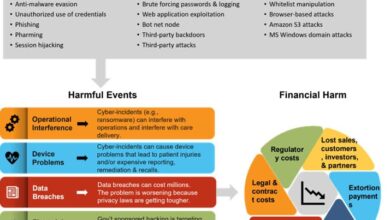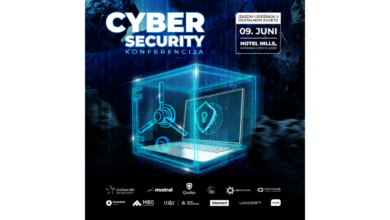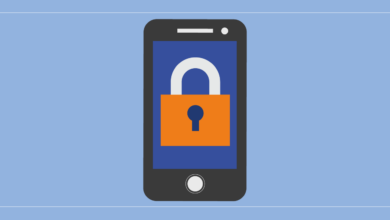
Ransomware Attack Hammersmith & Ameren Missouri
Ransomware attack on Hammersmith Medicines Research and Ameren Missouri: Imagine the chaos. One targets vital medical research, potentially jeopardizing patient care and groundbreaking discoveries. The other threatens the power grid of a major city, risking widespread outages and economic disruption. This isn’t science fiction; it’s a stark reality highlighting the vulnerability of critical infrastructure to cyberattacks. This post delves into the potential impacts, vulnerabilities, and response strategies for both organizations facing this modern threat.
We’ll explore the unique challenges each organization faces – from protecting sensitive patient data to ensuring the stability of the power grid. We’ll also examine the crucial role of cybersecurity insurance and the importance of effective crisis communication in mitigating the damage of a successful ransomware attack. The stakes are incredibly high, and understanding the potential consequences is the first step towards effective prevention and response.
Hammersmith Medicines Research & Ransomware

A ransomware attack on a research institution like Hammersmith Medicines Research (HMR) would have devastating consequences, far beyond the immediate disruption of operations. The potential for data loss, financial ruin, and reputational damage is significant, impacting not only the institution itself but also the patients and wider scientific community it serves. Understanding the potential ramifications is crucial for developing effective preventative measures and robust recovery strategies.
Impact on HMR Operations
A ransomware attack targeting HMR could severely compromise its research activities. The encryption of research data, including experimental results, clinical trial data, and intellectual property, would halt ongoing projects. This could lead to significant delays in research publications, grant applications, and the development of new treatments. If patient records are compromised, the consequences are even more severe.
This breach would not only violate patient privacy but could also expose HMR to substantial legal and financial penalties under regulations like GDPR. Ongoing clinical trials would be immediately disrupted, requiring extensive efforts to restore data integrity and ensure patient safety. The reputational damage caused by a data breach of this nature could be long-lasting, impacting future funding opportunities and collaborations.
Financial Consequences for HMR
The financial fallout from a ransomware attack on HMR would be multifaceted. Lost productivity due to interrupted research and administrative tasks would translate to direct financial losses. The costs associated with data recovery, system restoration, cybersecurity audits, and legal fees could be substantial. HMR might also face substantial fines and legal settlements stemming from data breaches and potential violations of patient privacy regulations.
Insurance payouts might not fully cover these expenses, leaving a significant financial burden on the institution. For example, the pharmaceutical company Merck experienced significant financial losses following a NotPetya ransomware attack in 2017, highlighting the substantial costs involved in recovery and remediation. The reputational damage could also lead to a decrease in funding and investment, further exacerbating the financial difficulties.
Hypothetical Timeline of a Ransomware Attack on HMR
The following table illustrates a hypothetical timeline of a ransomware attack on HMR, from initial infection to full recovery. It’s important to remember that the actual timeline and impact could vary depending on the sophistication of the attack and the preparedness of the institution.
| Stage | Timeline | Impact | Mitigation Strategy |
|---|---|---|---|
| Initial Infection | Within 24 hours | System slowdown, unusual activity, initial data encryption | Robust endpoint security, regular software updates, employee security awareness training |
| Data Encryption and Discovery | Within 48 hours | Critical systems and data inaccessible, operational disruption | Incident response plan activation, containment of infected systems, communication with relevant authorities |
| Ransom Demand | Within 72 hours | Demand for ransom payment, potential threat of data release | Negotiation (with legal counsel), assessment of the value of data versus the risk of payment |
| Data Recovery and System Restoration | 1-4 weeks | Significant downtime, potential data loss, cost of recovery | Data backups (offline and encrypted), system restoration from backups, forensic investigation |
| Post-Incident Analysis and Remediation | 2-6 months | Security vulnerabilities identified, system improvements implemented | Thorough security audit, implementation of enhanced security measures, employee retraining |
Ameren Missouri & Ransomware: Ransomware Attack On Hammersmith Medicines Research And Ameren Missouri
A ransomware attack on Ameren Missouri, a major utility company, would be significantly different from an attack on a pharmaceutical research firm like Hammersmith Medicines Research. While both organizations hold valuable data, the critical infrastructure element of Ameren’s operations introduces a far greater risk to public safety and economic stability. The potential consequences extend far beyond financial losses, impacting the daily lives of millions.The vulnerability of Ameren Missouri’s infrastructure to ransomware attacks is a serious concern.
The interconnected nature of their systems, from the power grid itself to customer databases and internal networks, creates numerous potential entry points for malicious actors.
Potential Infrastructure Vulnerabilities
Ameren Missouri’s infrastructure presents several attack vectors for ransomware. Outdated or poorly secured Supervisory Control and Data Acquisition (SCADA) systems, which manage the power grid, are particularly vulnerable. These systems, often lacking robust cybersecurity protections, could be compromised, potentially leading to disruptions in electricity supply. Furthermore, the company’s internal networks, including those used for billing, customer service, and employee communications, could be targeted.
A breach of customer databases could expose sensitive personal information, leading to identity theft and regulatory fines. Finally, the increasing reliance on Internet of Things (IoT) devices within the power grid and other operations creates additional vulnerabilities, as these devices often lack sufficient security features. A successful attack on any of these areas could have cascading effects, impacting the entire system.
Consequences of a Successful Ransomware Attack
A successful ransomware attack on Ameren Missouri’s power grid could have catastrophic consequences. Disruptions to electricity supply could lead to widespread blackouts, impacting hospitals, businesses, and residential areas. This could result in significant economic losses, as businesses are forced to shut down, and essential services are disrupted. Public safety would also be severely compromised, with potential impacts on emergency services, traffic control, and communication networks.
The restoration of power could take days or even weeks, leading to further economic disruption and social unrest. The cost of remediation, including paying the ransom (although this is highly discouraged), restoring systems, and compensating affected parties, would be enormous. The reputational damage to Ameren Missouri would also be substantial, potentially leading to a loss of customer trust and regulatory scrutiny.
Comparison of Cybersecurity Challenges
Hammersmith Medicines Research and Ameren Missouri face distinct cybersecurity challenges. Hammersmith’s primary concern is the protection of intellectual property, research data, and patient information. A ransomware attack could result in significant financial losses, research delays, and reputational damage. However, the impact on public safety and the broader economy would be relatively localized. In contrast, Ameren Missouri’s cybersecurity challenges involve protecting critical infrastructure that directly impacts the public good.
The potential consequences of a ransomware attack are far more severe, with potential for widespread blackouts, economic disruption, and significant risks to public safety. While both organizations need robust cybersecurity measures, the scale and implications of a successful attack are dramatically different. The critical infrastructure aspect elevates the risk for Ameren Missouri significantly.
Ransomware Attack Response Strategies
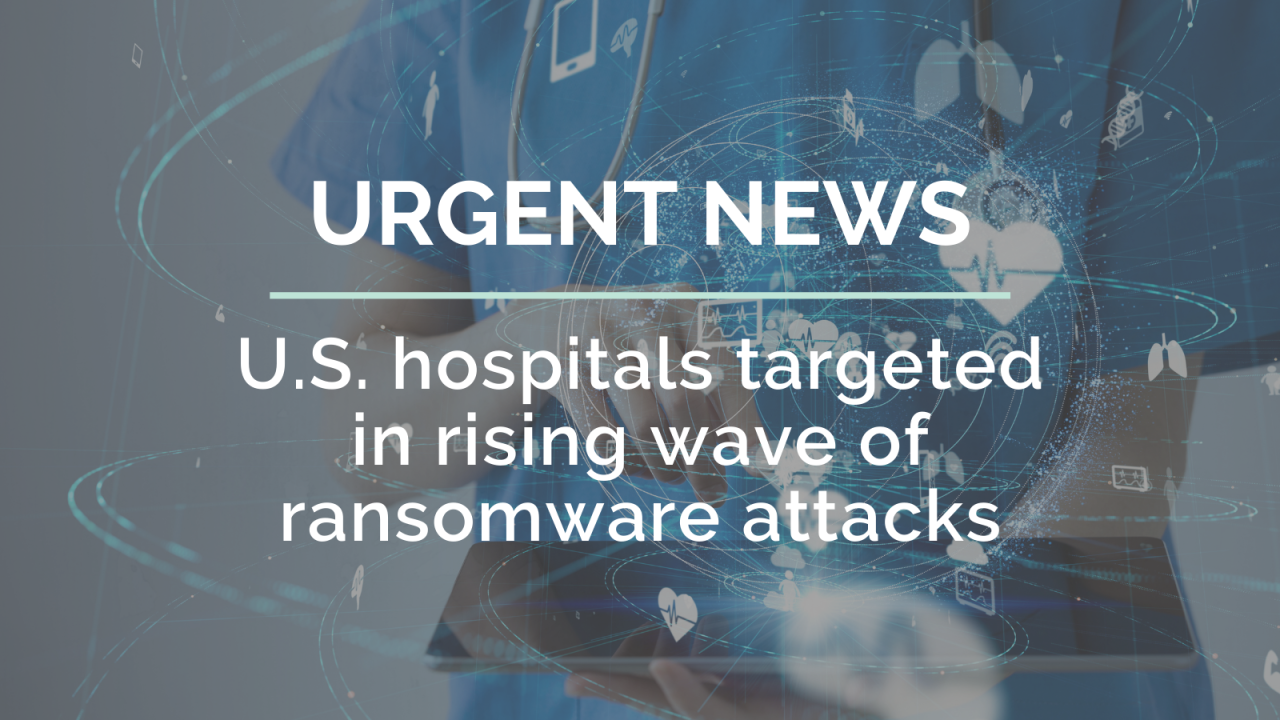
Responding to a ransomware attack requires a swift, organized, and comprehensive approach. The speed and effectiveness of your response directly impact the extent of damage and the overall recovery time. Organizations like Hammersmith Medicines Research and Ameren Missouri, given their sensitive data, face particularly high stakes in this process.
A well-defined incident response plan is crucial for minimizing disruption and preventing long-term consequences. This plan should be tested regularly to ensure its effectiveness in a real-world scenario.
Immediate Actions Following a Ransomware Attack
The first few hours are critical in mitigating the impact of a ransomware attack. Swift action can limit the spread of the malware and preserve crucial data.
- Isolate Infected Systems: Immediately disconnect all affected computers and servers from the network to prevent the ransomware from spreading. This includes isolating network shares and disabling any network connections.
- Identify the Scope of the Breach: Determine which systems and data have been compromised. This assessment is vital for prioritizing recovery efforts and understanding the overall impact.
- Preserve Evidence: Capture forensic images of infected systems before attempting any cleanup or recovery. This is crucial for investigation and potential legal proceedings.
- Activate Incident Response Team: Gather your pre-defined incident response team and follow established protocols. This team should include IT security professionals, legal counsel, and potentially public relations specialists.
- Notify Relevant Authorities: Depending on the nature of the data and the affected industry, notify law enforcement, regulatory bodies (like HIPAA for healthcare or NIST for critical infrastructure), and potentially customers.
Containment and Eradication Strategies
Once immediate actions are taken, the focus shifts to containing the attack and eradicating the malware. This phase requires careful planning and execution to minimize further damage.
- Malware Analysis: Analyze the ransomware to understand its capabilities, encryption method, and command-and-control infrastructure. This information is vital for developing an effective eradication strategy.
- System Remediation: Clean infected systems by removing the ransomware, restoring system files, and patching vulnerabilities. This may involve reinstalling operating systems and applications.
- Network Security Hardening: Implement enhanced security measures to prevent future attacks, such as updated firewalls, intrusion detection systems, and multi-factor authentication.
- Vulnerability Assessment: Conduct a thorough vulnerability assessment to identify and address any weaknesses that allowed the initial attack to occur.
Data Recovery Methods, Ransomware attack on hammersmith medicines research and ameren missouri
Data recovery is a crucial aspect of ransomware response. The approach depends on the type of encryption used and the availability of backups.
- Restore from Backups: If reliable, regularly tested backups are available, restore data from the most recent backup point. Verify data integrity after restoration.
- Data Recovery Tools: Explore the use of specialized data recovery tools that may be able to recover some encrypted data, depending on the ransomware’s encryption method. Success is not guaranteed.
- Negotiating with Attackers (Considered a Last Resort): Paying a ransom should only be considered as a last resort after exhausting all other options. It’s important to be aware that paying a ransom does not guarantee data recovery and may embolden future attacks.
Legal and Regulatory Obligations
Organizations facing ransomware attacks face significant legal and regulatory obligations, varying based on the industry and the type of data compromised. Non-compliance can lead to severe penalties.
For instance, Hammersmith Medicines Research, operating in the healthcare sector, would be subject to HIPAA regulations, requiring notification of affected individuals and regulatory agencies in case of a breach of protected health information (PHI). Ameren Missouri, as a critical infrastructure provider, would likely face similar obligations under various federal and state regulations, focusing on the security of critical infrastructure and consumer data.
They would also need to comply with reporting requirements to relevant government agencies.
These obligations generally include notification requirements, incident reporting to authorities, and potential investigations. Failure to comply can result in significant fines and reputational damage.
Ransomware Prevention Best Practices
Proactive measures are significantly more cost-effective than reactive responses. Implementing robust prevention strategies is essential to minimize the risk of ransomware attacks.
The recent ransomware attacks on Hammersmith Medicines Research and Ameren Missouri highlight the critical need for robust data security. Building resilient systems requires efficient development, and that’s where exploring options like domino app dev, the low-code and pro-code future , becomes incredibly relevant. These platforms could help organizations like Hammersmith and Ameren create more secure and adaptable applications to better withstand future cyber threats.
| Strategy | Implementation | Effectiveness |
|---|---|---|
| Employee Security Training | Regular phishing simulations, security awareness training covering ransomware, safe browsing habits, and password management. | Highly effective in reducing human error, a primary entry point for ransomware. |
| Multi-Factor Authentication (MFA) | Implementing MFA for all user accounts, especially administrative accounts. | Significantly reduces the risk of unauthorized access, even if credentials are compromised. |
| Network Segmentation | Dividing the network into smaller, isolated segments to limit the impact of a breach. | Contains the spread of malware, preventing it from reaching critical systems and data. |
| Regular Software Updates and Patching | Automated patching systems and regular updates for all software and operating systems. | Addresses known vulnerabilities that ransomware often exploits. |
| Robust Data Backup and Recovery Strategy | Regular, offsite backups using the 3-2-1 rule (3 copies of data, on 2 different media, with 1 copy offsite). Regular testing of backup and recovery procedures. | Crucial for data recovery in the event of a successful ransomware attack. |
| Regular Security Audits and Penetration Testing | Periodic security assessments to identify vulnerabilities and test the effectiveness of security controls. | Proactively identifies weaknesses and allows for remediation before they can be exploited. |
The Role of Insurance in Ransomware Mitigation
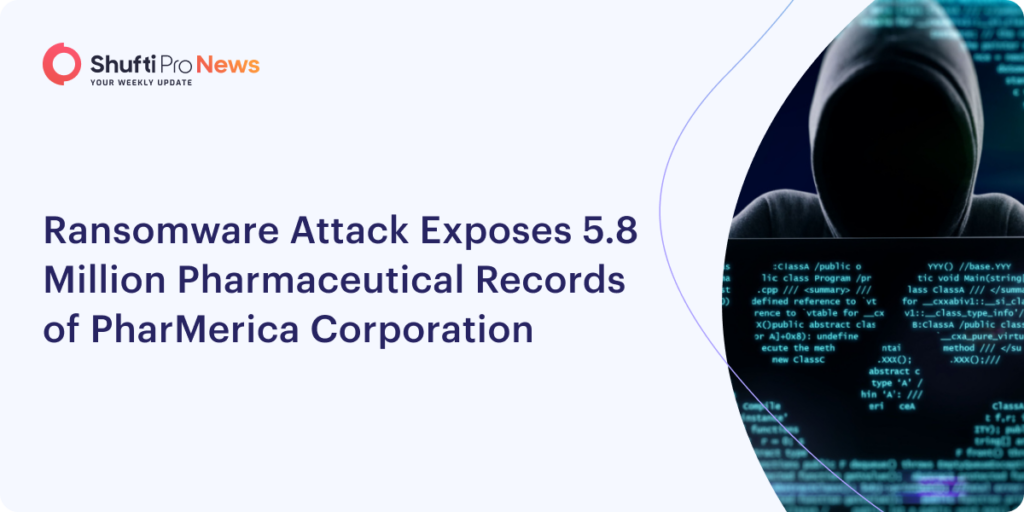
Ransomware attacks, as tragically demonstrated by the incidents at Hammersmith Medicines Research and Ameren Missouri, represent a significant financial and operational threat to organizations of all sizes. The sheer cost of recovery, including ransom payments, data restoration, and legal fees, can be crippling. This is where cyber insurance plays a crucial role, acting as a vital safety net in the face of such devastating events.
Understanding the types of coverage available and how they can help mitigate the financial impact is essential for any organization aiming to build robust cybersecurity resilience.Cyber insurance policies offer various levels of protection against ransomware attacks, significantly reducing the financial burden. These policies are tailored to the specific needs and risk profiles of different organizations, encompassing a range of coverage options.
While no policy is a silver bullet, a well-structured cyber insurance plan can be a crucial component of a comprehensive ransomware response strategy.
Cyber Insurance Policy Types and Ransomware Coverage
Cyber insurance policies typically cover a range of incidents, including ransomware attacks. Common coverage areas include ransom payments (often with stipulations and limits), costs associated with data recovery and restoration (including forensic investigation and system rebuilds), business interruption expenses (lost revenue due to downtime), legal and regulatory costs (related to data breaches and notifications), and public relations and crisis management expenses to help repair reputational damage.
Some policies even offer coverage for extortion attempts that don’t involve actual data encryption. The specific coverage offered will vary depending on the policy, the insurer, and the organization’s risk profile. For example, a healthcare provider like Hammersmith Medicines Research might require more extensive coverage for HIPAA compliance-related expenses than a utility company like Ameren Missouri.
Mitigation of Financial Impact Through Cyber Insurance
The financial impact of a ransomware attack can be devastating, encompassing direct costs (ransom payments, data recovery) and indirect costs (lost revenue, reputational damage, legal fees). Cyber insurance helps mitigate this impact by providing financial compensation for these expenses. For instance, if Hammersmith Medicines Research had to pay a ransom to regain access to critical patient data, the insurance policy would likely cover a portion, or potentially the entirety, of that payment, depending on the policy’s terms and conditions.
Similarly, the costs associated with hiring forensic experts to investigate the attack and restore their systems would also be covered. Ameren Missouri, on the other hand, might utilize insurance to cover the costs associated with restoring power grids and addressing potential damage to critical infrastructure. The extent of coverage will depend on the specific policy and the details of the incident.
Comparison of Cyber Insurance Providers
Choosing the right cyber insurance provider is crucial. Different providers offer varying levels of coverage, limits, and pricing structures. It’s essential to compare policies carefully, considering factors such as the insurer’s financial stability, claims handling process, and the breadth of coverage offered.
| Provider | Coverage Limits (Example) | Key Features | Pricing Structure (Example) |
|---|---|---|---|
| Provider A | $1 million for ransom payments, $500,000 for data recovery | 24/7 incident response team, legal counsel, public relations support | Based on revenue and risk assessment |
| Provider B | $5 million for all covered losses | Broad coverage, including business interruption and regulatory fines | Tiered pricing based on industry and size |
| Provider C | Customizable coverage options | Focus on proactive risk management services | Negotiated based on individual risk profile |
*Note: The coverage limits and pricing structures are illustrative examples and will vary significantly based on the specific policy and provider.*
Outcome Summary
The ransomware attacks on Hammersmith Medicines Research and Ameren Missouri serve as chilling examples of the growing threat of cybercrime against critical infrastructure. The potential consequences – from disrupted healthcare to widespread power outages – underscore the urgent need for robust cybersecurity measures, proactive risk management, and effective crisis communication strategies. While the specific vulnerabilities and challenges differ between these two organizations, the underlying lesson remains clear: proactive defense, robust incident response planning, and a comprehensive understanding of cyber insurance are essential for mitigating the devastating impact of a ransomware attack.
Failing to prepare is preparing to fail.
Helpful Answers
Q: What types of data are most vulnerable in a ransomware attack on Hammersmith Medicines Research?
A: Patient records (if applicable), research data (clinical trial results, patient samples), intellectual property, and financial information are all highly vulnerable.
Q: Could a ransomware attack on Ameren Missouri lead to a complete power outage?
A: A complete and sustained outage is unlikely, but localized outages and disruptions to service are a real possibility, depending on the extent and location of the attack.
Q: What is the role of employee training in ransomware prevention?
A: Employee training is crucial. Educating staff about phishing scams, malware, and safe internet practices significantly reduces the likelihood of successful attacks.
Q: Are ransom payments ever advisable?
A: Paying a ransom is generally discouraged. It doesn’t guarantee data recovery, funds criminal activity, and doesn’t deter future attacks. However, the decision is complex and should be made in consultation with law enforcement and cybersecurity experts.

